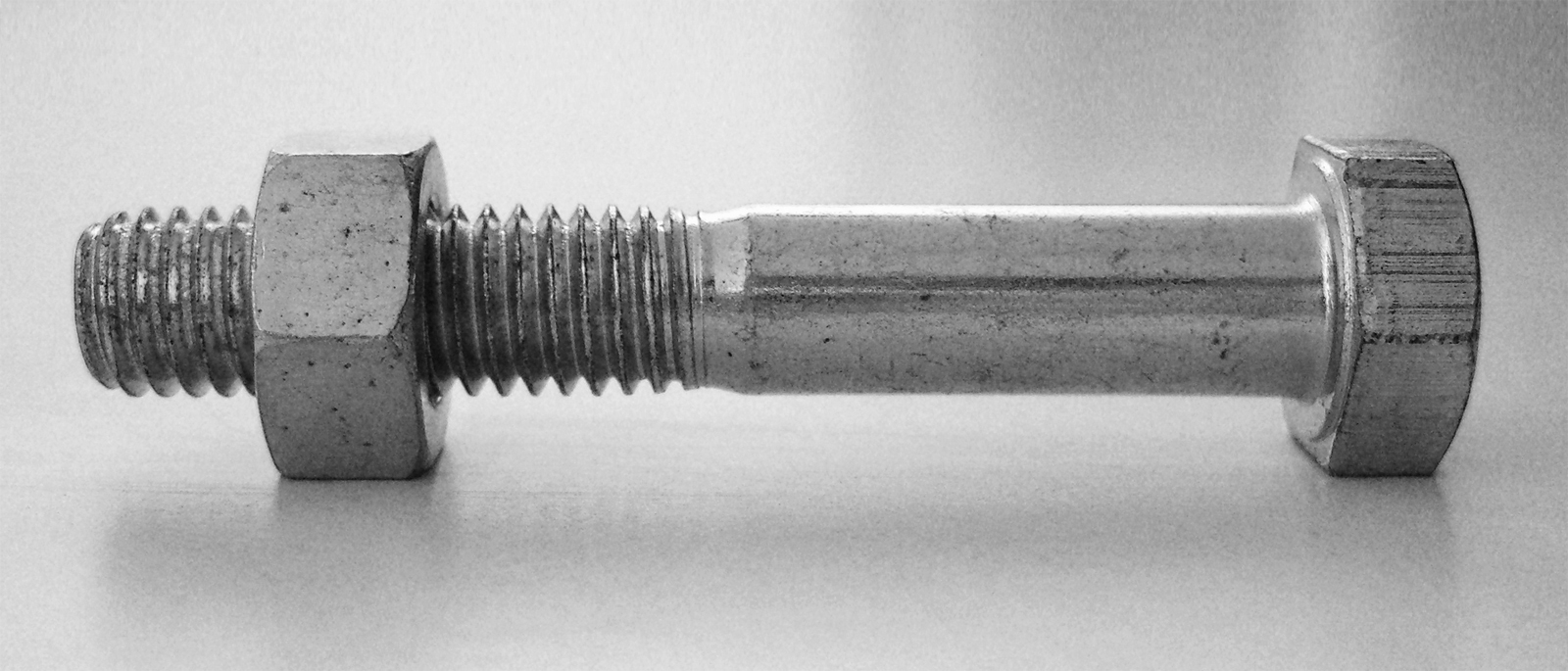|
Junk Box
Junk box is a term used by amateur radio operators (hams) to describe a collection of spare parts and old equipment kept to assist in building and repairing their station. Typical items found in a junk box are electronic components such as resistors and capacitors as well as small parts such as screws, nuts and bolts. A junk box may also contain surplus, cast off or used electronic gear. Radio amateurs who construct their own equipment, known as homebrewers, often have large or well stocked junk boxes. Description and uses According to some hams, a well-stocked junk box is a requirement for anyone who likes to build, repair, or tinker with radio equipment and electronic gear. Keeping an ample supply of spare electronic components provides the ham with parts to build a variety of electronic projects, as well as "spares" of components needed for repairs. Resistors, capacitors, transistors, meters, speakers, wire, cable, and even small mechanical parts such as screws, nuts and bol ... [...More Info...] [...Related Items...] OR: [Wikipedia] [Google] [Baidu] |
Cannibalization Of Machine Parts
In the maintenance of mechanical or electronic systems with interchangeable parts, cannibalization refers to the practice of removing parts or subsystems necessary for repair from another similar device, rather than from inventory, usually when resources become limited. The source system is usually crippled as a result, perhaps only temporarily, in order to allow the recipient device to function properly again. Cannibalization usually occurs due to unavailability of spare parts, an emergency, long resupply times, physical distance, or insufficient planning/budget. Cannibalization can also be due to reusing surplus inventory. At the end of World War II a large quantity of high quality, but unusable war surplus equipment such as radar devices made a ready source of parts to build radio equipment. Cannibalization can also be an economic/ecological choice for end of life products. Germany, rather than sell/export functional used cars, will disassemble and store parts no longer bein ... [...More Info...] [...Related Items...] OR: [Wikipedia] [Google] [Baidu] |
Vintage Amateur Radio
Vintage amateur radio is a subset of amateur radio hobby where enthusiasts collect, restore, preserve, build, and operate amateur radio equipment from bygone years, such as those using vacuum tube technology. Popular modes of operation include speaking over amplitude modulation (AM), and communicating using Morse code through continuous wave (CW) radiotelegraphy. Some enthusiasts have interest in owning, restoring and operating vintage military and commercial radio equipment such as those from 1940s to 1960s. Some undertake to construct their own gear, known in ham slang as Amateur radio homebrew, homebrewing, using vintage parts and designs. A number of amateur radio clubs and organizations sponsor contests, events, and swap meets that cater to this specialized aspect of the hobby. Appeal Vintage radio enthusiasts contend that the precise digital frequency displays and state-of-the-art, microprocessor-based features of modern amateur equipment lacks the aesthetic appeal and "so ... [...More Info...] [...Related Items...] OR: [Wikipedia] [Google] [Baidu] |
QRP Operation
QRP may refer to: * QRP operation in amateur radio, low-power transmitting * Queen retinue pheromone, a type of honey bee pheromones * Queens Road Peckham railway station, National Rail code * Quadratic residuosity problem in mathematics * Questionable research practices, see Research ethics#Scientific integrity, research ethics {{disambig ... [...More Info...] [...Related Items...] OR: [Wikipedia] [Google] [Baidu] |
Circuit Bending
Circuit bending is the creative customization of the circuits within electronic devices such as children's toys and digital synthesizers to create new musical or visual instruments and sound generators. Circuit bending is manipulating a circuit to get an output that was not intended by the manufacturer. Emphasizing spontaneity and randomness, the techniques of circuit bending have been commonly associated with noise music, though many more conventional contemporary musicians and musical groups have been known to experiment with "bent" instruments. Circuit bending usually involves dismantling the machine and adding components such as switches and potentiometers that alter the circuit. Experimental process ] The process of circuit bending involves experimenting with inexpensive second-hand electronics that produce sounds, such as toys, keyboards, drum machines, and electronic learning products. Innovators While Ghazala says that he was not the first circuit bender, he coi ... [...More Info...] [...Related Items...] OR: [Wikipedia] [Google] [Baidu] |
Boat Anchor (computer Science)
A boat is a watercraft of a large range of types and sizes, but generally smaller than a ship, which is distinguished by its larger size or capacity, its shape, or its ability to carry boats. Small boats are typically used on inland waterways such as rivers and lakes, or in protected coastal areas. However, some boats (such as whaleboats) were intended for offshore use. In modern naval terms, a boat is a vessel small enough to be carried aboard a ship. Boats vary in proportion and construction methods with their intended purpose, available materials, or local traditions. Canoes have been used since prehistoric times and remain in use throughout the world for transportation, fishing, and sport. Fishing boats vary widely in style partly to match local conditions. Pleasure craft used in recreational boating include ski boats, pontoon boats, and sailboats. House boats may be used for vacationing or long-term residence. Lighters are used to move cargo to and from large ships unable ... [...More Info...] [...Related Items...] OR: [Wikipedia] [Google] [Baidu] |
American Radio Relay League
The American Radio Relay League (ARRL) is the largest membership association of amateur radio enthusiasts in the United States. ARRL is a non-profit organization and was co-founded on April 6, 1914, by Hiram Percy Maxim and Clarence D. Tuska of Hartford, Connecticut. The ARRL represents the interests of amateur radio operators before federal regulatory bodies, provides technical advice and assistance to amateur radio enthusiasts, supports a number of educational programs and sponsors emergency communications service throughout the country. The ARRL has approximately 161,000 members. In addition to members in the US, the organization claims over 7,000 members in other countries. The ARRL publishes many books and a monthly membership journal called '' QST''. The ARRL is the primary representative organization of amateur radio operators to the US government. It performs this function by lobbying the US Congress and the Federal Communications Commission. The ARRL is also the interna ... [...More Info...] [...Related Items...] OR: [Wikipedia] [Google] [Baidu] |
Dumpster Diving
Dumpster diving (also totting, skipping, skip diving or skip salvage) is wikt:salvage, salvaging from large commercial, residential, industrial and construction containers for unwanted items discarded by their owners but deemed useful to the picker. It is not confined to dumpsters and skip (container), skips specifically and may cover standard household waste containers, curb sides, landfills or small dumps. Different terms are used to refer to different forms of this activity. For picking materials from the curbside trash collection, expressions such as curb shopping, trash picking or street scavenging are sometimes used. In the UK, if someone is primarily seeking recyclable metal, they are scrapping, and if they are picking the leftover food from farming left in the fields, they are gleaning. People dumpster dive for items such as clothing, furniture, food, and similar items in good working condition. Some people do this out of necessity due to poverty; others do it for Fr ... [...More Info...] [...Related Items...] OR: [Wikipedia] [Google] [Baidu] |
Hamfest
A hamfest is a convention of amateur radio enthusiasts, often combining a trade show, flea market, and various other activities of interest to amateur radio operators (hams). In the United Kingdom the term rally is more commonly used for amateur radio conventions. "Hamfests" were noted as early as 1924 in the U.S. Activities Hamfests are events organized by amateur radio enthusiasts, for social gatherings and promotion of amateur radio hobby. Typically annual or semiannual events are held over a weekend, they can last from several hours to several days. Most feature a flea market where the attendees buy and sell radio and related equipment. The equipment found at a hamfest can vary significantly from the newest high-tech gear to used, refurbished, or even antique equipment. Haggling or bargaining is the most common means of sale. Equipment that was originally sold at great expense to commercial users (such as public safety agencies) can often be found at a fraction of the price. ... [...More Info...] [...Related Items...] OR: [Wikipedia] [Google] [Baidu] |
Amateur Radio Homebrew
Homebrew is an amateur radio slang term for home-built, noncommercial radio equipment. Design and construction of equipment from first principles is valued by amateur radio hobbyists, known as "hams", for educational value, and to allow experimentation and development of techniques or levels of performance not readily available as commercial products. Some items can be home-brewed at similar or lower cost than purchased equivalents. History In the early years of amateur radio, long before factory-built gear was easily available, hams built their own transmitting and receiving equipment, known as homebrewing. In the 1930s, 40s, and 50s, hams handcrafted reasonable-quality vacuum tube-based transmitters and receivers which were often housed in their basements, and it was common for a well-built "homebrew rig" to cover all the high frequency bands (1.8 to 30 MHz). After WWII ended, surplus material (transmitters/receivers, etc.), was readily available, providing previously unav ... [...More Info...] [...Related Items...] OR: [Wikipedia] [Google] [Baidu] |
Amateur Radio
Amateur radio, also known as ham radio, is the use of the radio frequency radio spectrum, spectrum for purposes of non-commercial exchange of messages, wireless experimentation, self-training, private recreation, radiosport, contesting, and emergency, emergency communications. The term ''"radio amateur"'' is used to specify ''"a duly authorized person interested in radioelectric practice with a purely personal aim and without wikt:pecuniary, pecuniary interest"'' (either direct monetary or other similar reward); and to differentiate it from commercial broadcasting, public safety (police and fire), or two-way radio professional services (maritime, aviation, taxis, etc.). The amateur radio service (''amateur service'' and ''amateur-satellite service'') is established by the International Telecommunication Union (ITU) through their recommended radio regulations. National governments regulate technical and operational characteristics of transmissions and issue individual station li ... [...More Info...] [...Related Items...] OR: [Wikipedia] [Google] [Baidu] |
Bolt (fastener)
A bolt is an externally helical threaded fastener capable of being tightened or released by a twisting force ( torque) to a matching nut. The bolt has an external male thread requiring a matching nut with a pre-formed female thread. History Nuts and bolts were originally hand-crafted together, so that each nut matched its own bolt, but they were not interchangeable. This made it virtually impossible to replace lost or damaged fixers, as they were all different. Joseph Whitworth in 1841 proposed that a standard should be set, but it did not happen immediately. In 1851 the Great Exhibition of the Works of Industry of All Nations was to be held in Hyde Park, London, England, and it was decided to build the Crystal Palace as part; this had to be done in 190 days, and at reasonable cost. Research into the remains of the destroyed building in 2024 revealed a major innovation that made this possible. The construction firm responsible, Fox Henderson, decided to use nuts and bo ... [...More Info...] [...Related Items...] OR: [Wikipedia] [Google] [Baidu] |






